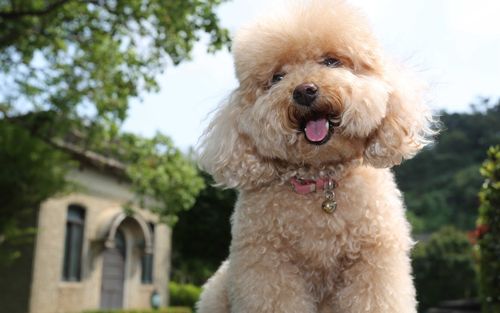
It used to be a distinguished guest of the Queen of England, and it was once the beloved pet of King Louis XVI of France. Through the changes of history, it has come to be with us, becoming an angel in the world and winning the hearts of people. It is the Poodle.
Origin of the Poodle:
Poodles appeared in Europe around 30 AD. It is speculated that Poodles originated in Germany, where they were known for their skills in water retrieval and were called “Pudel” or “water dogs.” Due to their innate excellent water abilities, they became outstanding water retrievers. In the early days, Poodles did not have the small and adorable Toy and Miniature varieties we know today, but only the Standard variety (according to AKC classification), which is the larger size we now recognize as the Standard Poodle. Later, Poodles were introduced to France, where they were regarded as the national dog and reserved as pets only for nobles, thus earning the name “Poodle.”
Appearance of the Poodle:
Poodles come in various colors such as gray, brown, coffee, apricot, and cream. The coat colors are even and consistent, with variations in depth even within the same color. The head of a Poodle is slightly rounded, with well-developed cheek muscles and a flat skull. The distance from the forehead to the stop is equal to the length of the muzzle. The ears hang down on both sides of the head, with the base of the ear slightly lower than the eyes. Their coats are dense, curly, and woolly in texture.
Classification by Size:
Poodles are classified into four main sizes: Standard Poodle, Miniature Poodle, Toy Poodle, and Giant Poodle.
- Giant Poodle: Shoulder height > 48 cm.
- Standard Poodle: Shoulder height > 38 cm.
- Miniature Poodle: Shoulder height 29-38 cm.
- Toy Poodle: Shoulder height < 28 cm (25 cm is the optimal shoulder height).
- (Teacup Poodle: Shoulder height < 20 cm (it is classified as a Toy Poodle in international standards).
Personality Traits of the Poodle:
Poodles rank second in the world in terms of intelligence among dog breeds and are known for their high intelligence, making them easy to train. They are energetic, enjoy playing, pleasing their owners, and have strong adaptability, quickly adjusting to new family environments and making new friends. Their liveliness and intelligence make them popular companion dogs, providing companionship and joy.
Care and Considerations:
Poodles have a relatively low body odor compared to other breeds, and their curly coats shed less and do not fly around. However, their coats require daily care to prevent matting, and regular grooming is necessary, or they may appear untidy. Poodles are prone to a common condition called “tear stains,” which can be caused by short tear ducts, ingrown eyelashes, or feeding human food. Therefore, owners should wipe their eyes daily, keep the face clean, and regularly trim the facial hair. In terms of diet, avoid feeding them human food and consider providing them with dog food or supplements that contain deep-sea fish oil, trace elements, and ingredients that help reduce tear stains.
Poodles make excellent family companion dogs with many advantages. They are highly intelligent, easy to train, have low body odor, and shed less. They are also energetic, enjoy playing, and aim to please their owners. While they can be calm and elegant like aristocrats when resting, they become lively and sunny when active.
Do you like this kind of Poodle?